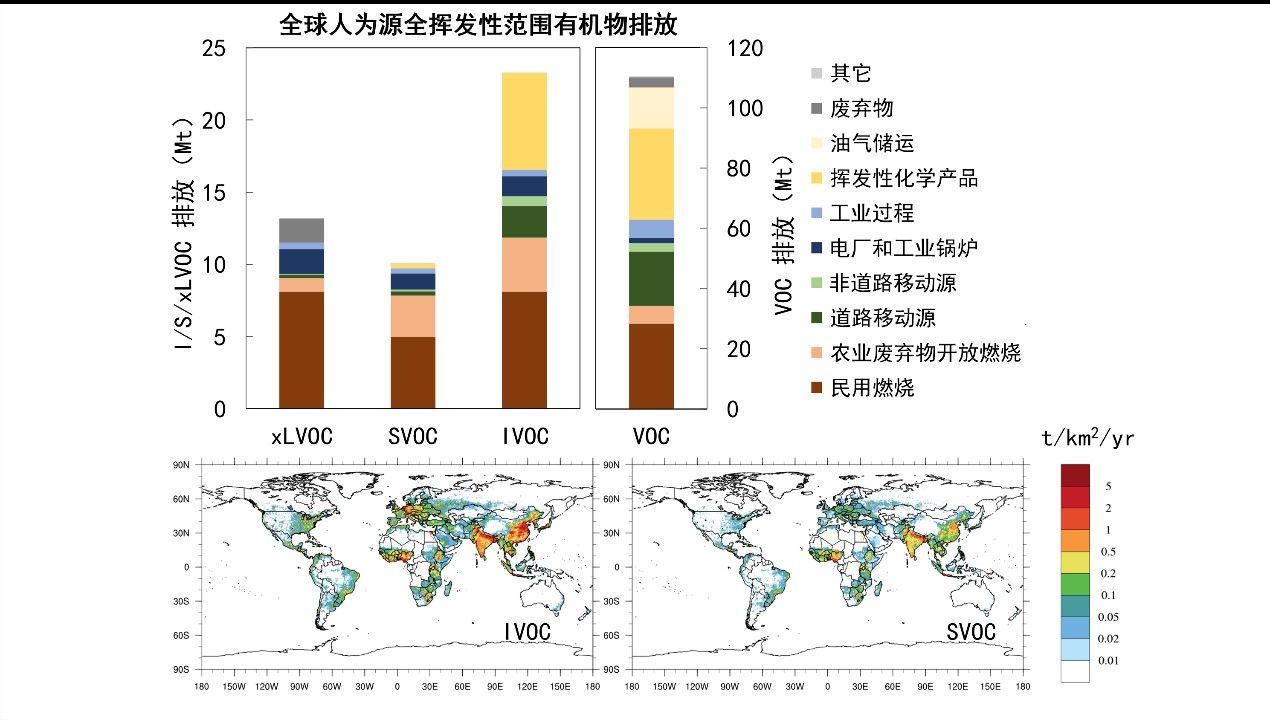Traditional global emission inventories classify primary organic emissions into nonvolatile organic carbon and volatile organic compounds (VOCs). However, they lack information about volatility distribution and overlook the emissions of a significant amount of intermediate-volatility and semi-volatile organic compounds (IVOCs and SVOCs, respectively). Professor Shuxiao Wang's team from School of Environment at Tsinghua University has established the first global anthropogenic emission inventory of full-volatility organic compounds. This inventory provides an analysis of volatility distribution, sectoral contributions, and spatial distribution of global organic emissions. This research will enhance the understanding of the impact of organic emissions on global air pollution and climate change.
This study offers a precise quantification of full-volatility organic emissions on a global scale, covering a broader range of emission sectors. High-resolution and sector-specific emission factors, derived from simultaneous particle and gaseous emission testing, were employed to characterize the emissions from different sectors. In 2015, emissions of extremely low/low-volatility organic compounds (xLVOCs), SVOCs, IVOCs, and VOCs were 13.2, 10.1, 23.3, and 120.5 Mt, respectively. The full-volatility framework fills a gap of 18.5 Mt I/S/xLVOCs compared with the traditional framework. The study identified key regions for full-volatility organic compound emissions, including Africa, India, Southeast Asia, China, Europe, and the United States, with China, India, the United States, and Nigeria being the top four emitters in the full-volatility range. Moreover, the research reveals the relationship between economic development levels and per capita emissions.

Global anthropogenic emissions of full-volatility organic compounds and the spatial distribution of I/SVOCs
The identification of dominant sectors in the full-volatility range in key emitting regions provides additional insight into the assessment and development of regional pollution controls. For example, less developed regions, such as Africa, India, and Southeast Asia, may prioritize clean fuel replacement in the domestic combustion sector and a more stringent ban on the open burning of agricultural residues. More developed regions, such as Europe and the United States, have already achieved emission reductions in domestic combustion, open burning of agricultural residues, and on-road transportation sectors by promoting cleaner fuel and stricter regulations. However, organic volatilization emissions from VCP consumption are difficult to curb through such control measures, and a more promising strategy would be to further improve resource management and substitution of VCPs. For China, the largest global emitter, measures could be taken in both domestic combustion and the VCP sectors to achieve significant emission reductions.
On October 19, the research findings were published under the title "Global Anthropogenic Emissions of Full-Volatility Organic Compounds" in the journal Environmental Science & Technology. Lyuyin Huang, a Ph.D. student in the School of Environment at Tsinghua University, is the lead author of the paper. Professor Shuxiao Wang serves as the corresponding author. Other co-authors of the paper include Assistant Professor Bin Zhao, Dr. Guanghan Huang, Dr. Haotian Zheng, and Academician Jiming Hao from the School of Environment at Tsinghua University, as well as Dr. Xing Chang from the Transport Planning and Research Institute, Ministry of Transport, and Dr. Zbigniew Klimont from the International Institute for Applied Systems Analysis (IIASA).
This research was supported by the Basic Science Center Program on Atmospheric Haze Chemistry of National Natural Science Foundation of China, Samsung Advanced Institute of Technology, and New Cornerstone Science Foundation through the XPLORER PRIZE.
Link to the paper: https://pubs.acs.org/doi/full/10.1021/acs.est.3c04106





